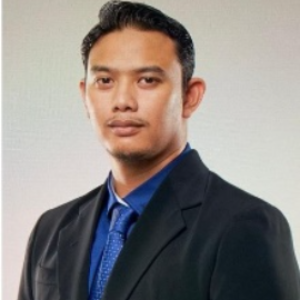Abstract:
This study investigated the impact of Paravalvular Leakage (PVL) due to the undersizing Transcatheter Aortic Valve Implantation (TAVI) valve using the Fluid Structure Interaction (FSI) approach. A 3D patient-specific aorta model with an annulus diameter of 27.3 mm was constructed using MIMICS software. The TAVI valve identical to Edward SAPIEN XT 26 and 23 size was implanted into the patient’s aortic annulus. The impact of severe aortic stenosis by means of smaller opening of 20% different Geometrical Orifice Area (GOA) was represented in terms of undersizing of TAVI valves in order to investigate the fluid and structure mechanical properties using FSI simulation. TAVI 26 (20% GOA) produced highest and critical value compared to undersize of TAVI 23 (20% GOA) in terms of maximum velocity, highest magnitude of pressure drop, maximum WSS distribution and maximum total mesh displacement. In contrast, the mass flow rate showed that TAVI 23 (20% GOA) produced smaller percentage of uneven mass flow rate distributions at the aorta outlets compared to TAVI 26 (20% GOA). Moreover, the mass flow rate magnitude of PVL complication for TAVI 23 (20% GOA) also showed higher magnitude than TAVI 26 (20% GOA) due to higher area of PVL region
Audience take-away:
- The FSI simulation technique on understanding the blood flow behavior of patient specific case.
- The knowledge hemodynamics on undersizing TAVI valve using FSI simulation.
- To have a clear overview on the impact of undersizing TAVI valve with the help of simulation prior to perform actual operation.
- To facilitate the procedure especially for cardiology to envision more realistically the region of interest for both clinician and patient.
Biography:
Dr. Adi Azriff Bin Basri is currently a Senior Lecturer in the Department of Aerospace Engineering, Universiti Putra Malaysia (UPM). He received his Doctoral of Philosophy (PhD) from UPM in the area of blood flow behaviour of cardiovascular disease (CVD) with the computational application of Fluid-Structure Interaction (FSI). During his PhD, he also collaborated with National Heart Institute (IJN), Malaysia and Kyushu Institute of Technology (Kyutech), Japan for numerical and experimental studies.
In the past, he had received more than 10 awards of gold and silvers from university and national levels related to the project on multi-purpose safety syringe, PUTRA UAV biodegradable natural fiber composite and innovatory pineapple leaves fiber extraction blade for extraction machine. His project of multi-purpose safety syringe acknowledged by other countries such as Indonesia, Australia, South Africa, India, Japan, United Arab Emirates and United States of America since 2011 and until now. Currently, he just received another patent document related to the project on multistage safety cannula/catheter protector. He is also had secured around MYR 244,000 under various research grant as leader and also member. He had graduated 1 master by course student and currently supervising 2 master by research students. He is also co-supervising 10 Phd students and 6 master by research students. He also actively participated in international conferences as invited speaker, presenter and technical committees. Plus, he had experienced in organizing international conferences in Malaysia and Japan.
His current research interest is leading him to the wide research applications such medical device development, FSI associated to bio-medical engineering including paravalvular leakage (PVL), transcatheter aortic valve implantation (TAVI), stenosed renal artery, and CVD effects at high altitude flight condition. He is also active in aerodynamics research by implementing the CFD and FSI approach in aerospace field such as in aerodynamics loading lifting line theory, propeller blade, aerodynamics morphing wing and tesla microturbine performance. Moreover, he is also active in experimental and simulation study of structural analysis and material composite. Till date, he has several publications in reputed international and national journals/conferences. He is also a member of Board of Engineers Malaysia (BEM) in 2010.



